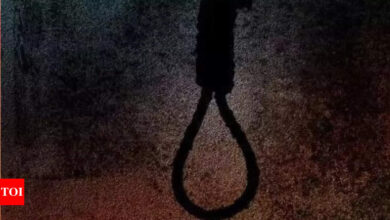India
Northeast Diary: What can Manipur learn from Mizoram on refugee issue? | India News

[ad_1]
Manipur and Mizoram, both of which share borders with Myanmar, are bearing the brunt of the “refugee crisis” triggered by the ongoing civil war in the neighbouring country. However, one state is doing better than the other in handling the situation.
Months before violence broke out in Manipur, the state government flagged the problem of undocumented immigrants from neighbouring countries, especially Myanmar. In March, six student organisations demanded a National Register of Citizens (NRC) and the setting up of a population commission for detection and deportation of “illegal immigrants”.
Even the United Naga Council (UNC), the apex body of the Nagas in Manipur, raised concern in the past about “unrecognized villages” that came up in the hills and areas bordering Myanmar. There were allegations that illegal immigrants were involved in poppy cultivation and they were mobilised by Kuki militants to protest against the state government’s war on drugs. But tribal groups have rejected this charge.
Such allegations and counter-allegations have further upset the delicate ethnic equations in Manipur, home to as many as 34 tribes and communities. Many experts have identified this as a key factor behind the current conflict between Kukis living in the hills and Meiteis who dominate the Imphal Valley.
The Kukis in Manipur share ethnic ties with Kuki-Chin-Zo groups of Myanmar. Historically, Mizoram has been the primary destination for the Chin community fleeing oppressive military regimes in Myanmar. But they also enter and settle in hill areas of Manipur.
The problem is that there is no proper mechanism to differentiate refugees from “illegal migrants”. This is mainly due to the fact that India is not a signatory to the 1951 UN Refugee Convention or its 1967 Protocol. And the central government does not officially accord refugee status to foreigners seeking shelter even on humanitarian grounds, and considers them illegal immigrants.
Nevertheless, Mizoram has not only allowed refugees from Myanmar and Bangladesh’s Chittagong hills to stay in the state, but has also offered them other assistance. Most importantly, the state government keeps a count of the refugees by providing them with temporary ID cards.
Currently, the state has given food and shelter to over 40,000 people from the two neighbouring countries. Additionally, Mizoram is hosting nearly 12,000 people displaced due to the ongoing violence in Manipur.
While restoring normalcy is the top priority of the Manipur government at present, it would do well to devise a refugee policy in the long run, taking a cue from Mizoram.
Months before violence broke out in Manipur, the state government flagged the problem of undocumented immigrants from neighbouring countries, especially Myanmar. In March, six student organisations demanded a National Register of Citizens (NRC) and the setting up of a population commission for detection and deportation of “illegal immigrants”.
Even the United Naga Council (UNC), the apex body of the Nagas in Manipur, raised concern in the past about “unrecognized villages” that came up in the hills and areas bordering Myanmar. There were allegations that illegal immigrants were involved in poppy cultivation and they were mobilised by Kuki militants to protest against the state government’s war on drugs. But tribal groups have rejected this charge.
Such allegations and counter-allegations have further upset the delicate ethnic equations in Manipur, home to as many as 34 tribes and communities. Many experts have identified this as a key factor behind the current conflict between Kukis living in the hills and Meiteis who dominate the Imphal Valley.
The Kukis in Manipur share ethnic ties with Kuki-Chin-Zo groups of Myanmar. Historically, Mizoram has been the primary destination for the Chin community fleeing oppressive military regimes in Myanmar. But they also enter and settle in hill areas of Manipur.
The problem is that there is no proper mechanism to differentiate refugees from “illegal migrants”. This is mainly due to the fact that India is not a signatory to the 1951 UN Refugee Convention or its 1967 Protocol. And the central government does not officially accord refugee status to foreigners seeking shelter even on humanitarian grounds, and considers them illegal immigrants.
Nevertheless, Mizoram has not only allowed refugees from Myanmar and Bangladesh’s Chittagong hills to stay in the state, but has also offered them other assistance. Most importantly, the state government keeps a count of the refugees by providing them with temporary ID cards.
Currently, the state has given food and shelter to over 40,000 people from the two neighbouring countries. Additionally, Mizoram is hosting nearly 12,000 people displaced due to the ongoing violence in Manipur.
While restoring normalcy is the top priority of the Manipur government at present, it would do well to devise a refugee policy in the long run, taking a cue from Mizoram.
#Northeast #Diary #Manipur #learn #Mizoram #refugee #issue #India #News






